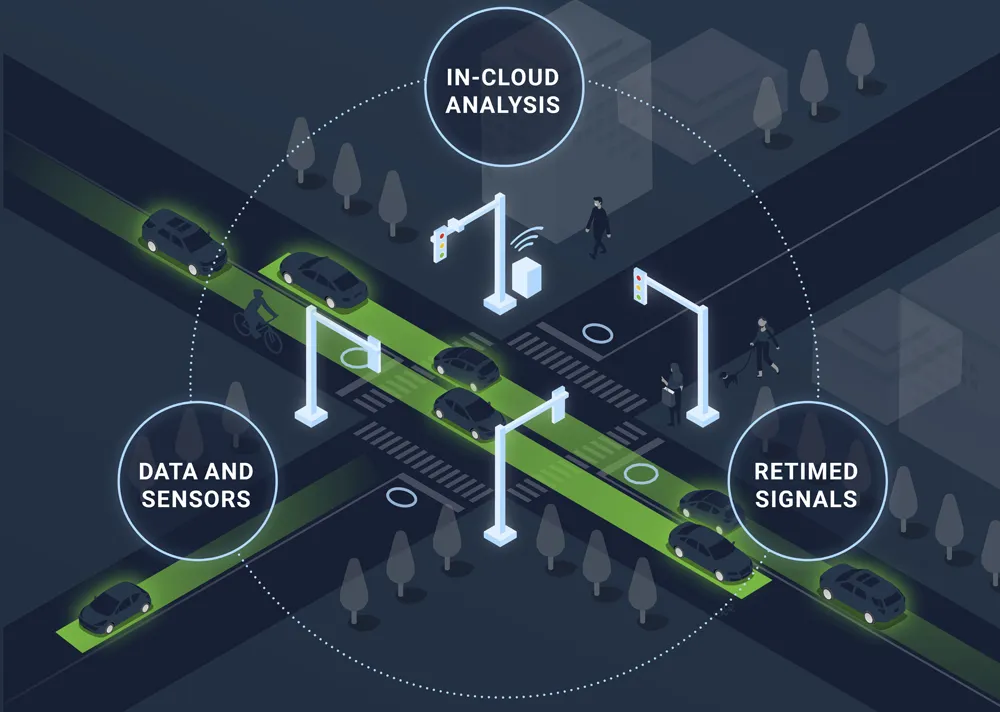
AI-driven vehicle licence plate image review systems have a transformative potential in tolling. Yet while AI-driven automation offers unparalleled efficiency in managing large volumes of data, it is essential to recognise that, without proper governance, AI can introduce as many risks as benefits. As AI adoption accelerates, oversight isn’t optional - it’s essential to prevent errors, protect privacy and maintain public trust.
AI should be developed with ethical considerations built into the software design. Humans must remain an integral part of the processing workflow to ensure quality control, proper calibration and continuous improvement. Additionally, privacy concerns must be addressed to protect customer data from misuse or exposure.
Practical evolution beyond legacy systems
Legacy technologies like fingerprinting have served the tolling industry for over two decades. However, modern tolling systems face significant operational inefficiencies due to high traffic volumes, increasingly complex licence plate types, and the need for real-time responsiveness. AI-driven image-review technologies have revolutionised tolling operations by offering real-time insights and significantly higher accuracy rates.
However, not all AI systems are created equal. Optical character recognition (OCR), often deployed at the in-lane level, assesses image quality but lacks the precision required for financial transactions due to technical limitations and concerns regarding personally identifiable information (PII) exposure, leading to inefficiencies and potential privacy risks.
“As AI adoption accelerates, oversight isn’t optional - it’s essential”
In contrast, ALPR is specifically designed for accurate, image-based transactions, making it the more reliable choice when governed properly. The risks of misclassification and unauthorised access to vehicle data highlight the importance of using AI responsibly and implementing governance measures to safeguard customer privacy.
Ensuring responsibility in AI implementation
Unmanaged AI can amplify efficiency but also magnify risks. Effective governance ensures AI remains an asset rather than a liability. To achieve this, three key principles must guide AI implementation in tolling operations:
● Ethics in software design AI must be developed with ethical considerations from the start tofairness, transparency, and accountability in automated decision-making.
● Human oversight in workflows AI should not operate in isolation. Humans must be actively involved in reviewing and validating AI outputs to ensure high-quality results and continuous system improvement.
● Data privacy and security AI systems must comply with strict, transparent data protection policies to prevent customer data misuse and unauthorised exposure.

Operational and financial risks
Unregulated AI in tolling image review can lead to cascading problems across an organisation. Consider the domino effect of a single error in image review:
● Customer impact Misread plates lead to incorrect billing, sparking unnecessary customer disputes.
● Operational strain Call centres face higher volumes of complaints, leading to longer wait times and higher staffing costs.
● Financial drain Incorrect DMV lookups and misdirected collections waste resources and damage trust.
Investing in a best-in-class image review process isn’t just a technical upgrade - it’s a proactive strategy to address potential issues at their root, reducing downstream costs and customer frustrations. Human auditors play a crucial role in monitoring and refining machine learning workflows, ensuring data integrity and maintaining business profitability. AI should not replace human expertise but rather augment it to drive more efficient, customer-centric operations.
New era of human + AI collaboration
Combining ALPR with a manual image review (MIR) process creates a powerful synergy, enabling seamless error correction and predictive analytics. When designed with governance in mind, AI-powered systems can identify patterns and anomalies in real-time, preventing misreads and reducing customer disputes.
However, AI should not operate independently. Software development must consider the necessity of human involvement in AI workflows, ensuring a continuous exchange of learning between AI and human, where both parties learn and improve together. This approach ensures AI is a support system rather than a replacement for human expertise.
Preventing - not creating – a crisis
The goal is not to react to a crisis but to prevent one from occurring in the first place. AI governance is the key to maintaining control over tolling operations and ensuring a responsible AI approach. By embedding ethical design principles, integrating human oversight, and enforcing strict data privacy measures, tolling agencies can leverage AI for efficiency while mitigating risks.
Ultimately, it is up to industry leaders and policymakers to ensure that AI enhances, rather than disrupts, tolling operations. Responsible AI implementation is not just about improving efficiency; it is about maintaining trust, ensuring accuracy, and safeguarding customer privacy. The future of tolling depends on our ability to balance AI’s transformative potential with human-driven oversight and ethical governance.

ABOUT THE AUTHOR
Rafael Hernandez is vice president, tolling, at IntelliRoad









